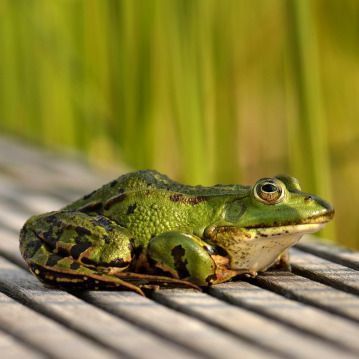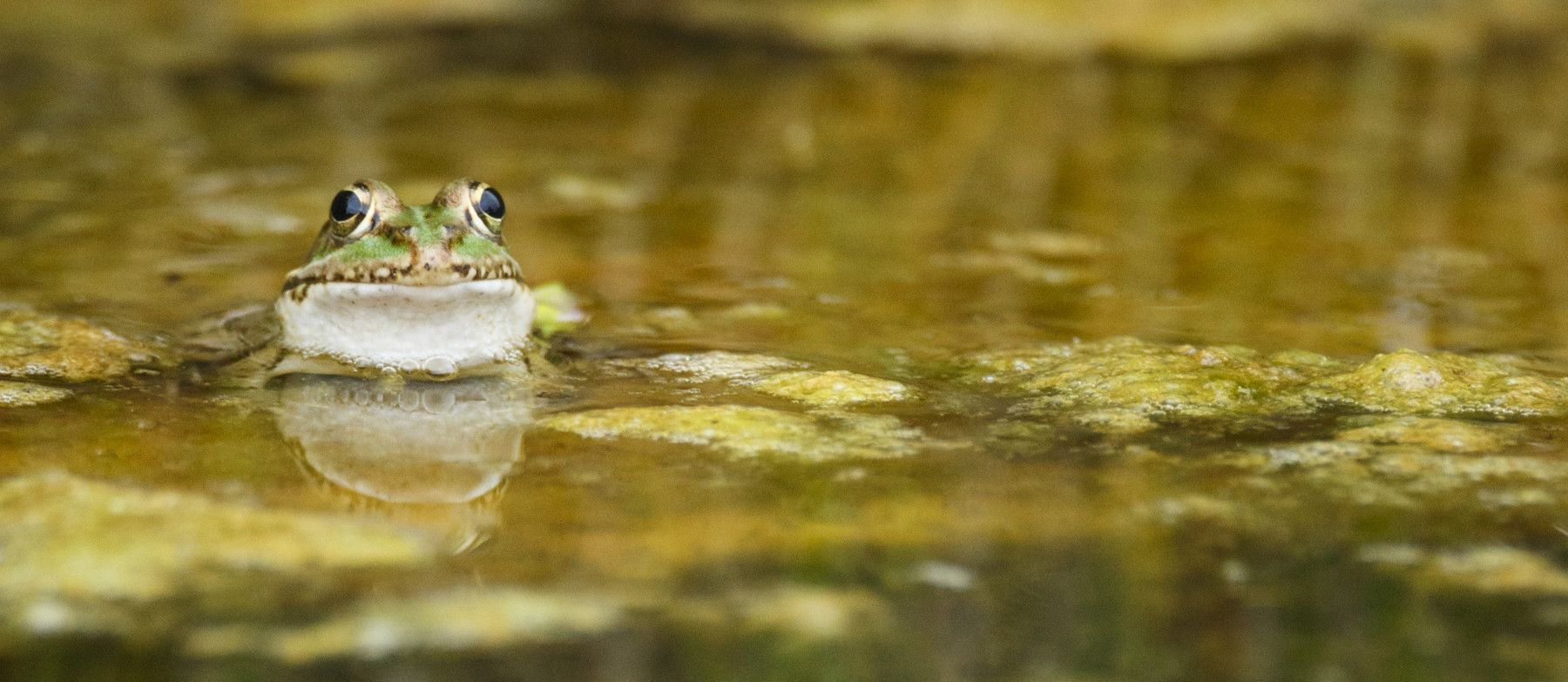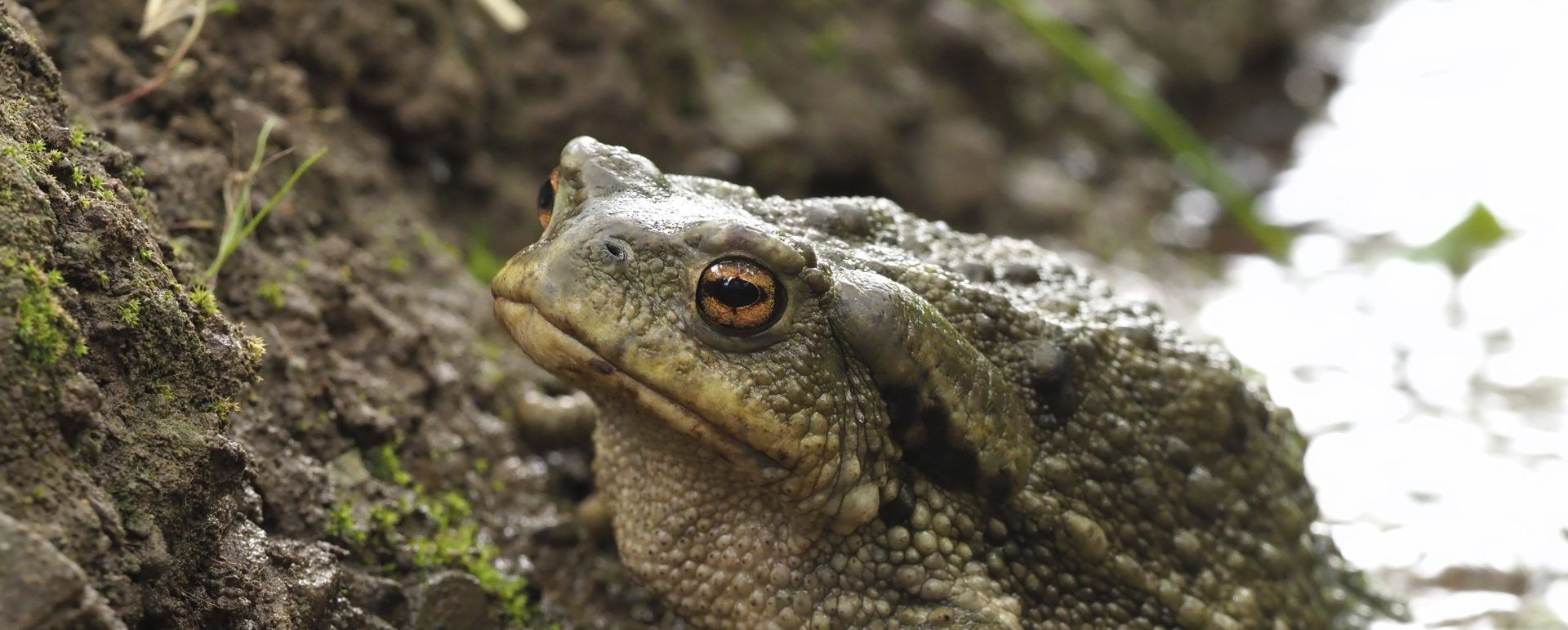There are 15 different species of amphibians in Catalonia (frogs, toads, newts and salamanders), and all of these are listed as protected species. Thanks to this article, you’ll be able to understand a bit more about why these species are in need of protection and how this can be done.
There are several reasons for the massive decline of amphibians in recent years, including climate change. Around the world, the biggest factors leading to amphibian extinction are considered to be:
- Deforestation and habitat fragmentation: mass deforestation, fires and habitat fragmentation for human infrastructure such as roads, urban centers, extensive agricultural farmland, etc., isolate and weaken amphibian populations. In addition to this, roads also pose a great danger to amphibians because they are often hit by cars.
- Climate change: with rising temperatures, extreme drought, torrential rains, etc., climate change is a threat to amphibians since they are very sensitive to change and rely on the presence of aquatic environments for their survival. Their skin is completely permeable and helps them breathe, which makes them much more sensitive than other animal species to changes in temperature, pollution and toxins.
- Chytrid fungus: the fungus known as chytrid (Batrachochytrium dendrobatidis, or Bd) is an invasive, deadly species for amphibians which has spread around the world and is causing many amphibian species to become sick, leading to extinction.
- Invasive animal species: many invasive species spread over a certain area and compete with or are predators of native species. Indigenous amphibians are often harmed by these new relationships, which weaken their populations and make them much more vulnerable.
- Overexploitation: amphibians, especially tropical species, often have very extravagant colors and are extremely attractive for the pet trade. In some species, illegal trading for this purpose is decimating populations. Additionally, in many places around the world, frog legs are highly appreciated gastronomically, which leads to the overexploitation of many species.
- Pollution and pesticides: amphibians are extremely dependent on aquatic environments such as rivers, marshes, ponds, basins, etc., which are often contaminated by chemicals, herbicides, pesticides or fertilizers. This affects the quality of the water and can cause the amphibians living in the area to become sick. In addition to this, pesticides also affect the populations of insects and other animals that amphibians feed on, which also causes their populations to decline.
Looking at all of these obstacles that amphibians face, it’s clear that we need to take both collective and individual action to preserve these species.

Salamander

Tree frog

Common Frog

Common toad
The ecological importance of amphibians
![]() Amphibians are very important for ecosystem balance and because of their essential role within the food chain. They are predators of insects and other invertebrates, while also serving as food for other animals. If an amphibian disappears, the entire tactical network of the ecosystem will be affected, as well as the populations of other species.
Amphibians are very important for ecosystem balance and because of their essential role within the food chain. They are predators of insects and other invertebrates, while also serving as food for other animals. If an amphibian disappears, the entire tactical network of the ecosystem will be affected, as well as the populations of other species.
![]() Amphibians act as ecological and natural insecticides. If you have frogs or toads in your garden or other areas near your home or work, you won’t have to worry about buying artificial insecticides that could damage flora and fauna.
Amphibians act as ecological and natural insecticides. If you have frogs or toads in your garden or other areas near your home or work, you won’t have to worry about buying artificial insecticides that could damage flora and fauna.
![]() The sounds made by frogs and toads can be classified through various studies, and temperature fluctuations in the area can be detected using these sounds in order to see the evolution and existence of global warming.
The sounds made by frogs and toads can be classified through various studies, and temperature fluctuations in the area can be detected using these sounds in order to see the evolution and existence of global warming.

What can we do to help amphibians?
![]() One of the most important actions you can take to conserve amphibians is not to touch them with your hands if you find one. Humans can act as carriers of various pathogens and viruses that could affect them. And now that we’re more aware than ever, let’s take advantage of everything we’ve learned during these last months of the pandemic to also practice these things when it comes to endangered species.
One of the most important actions you can take to conserve amphibians is not to touch them with your hands if you find one. Humans can act as carriers of various pathogens and viruses that could affect them. And now that we’re more aware than ever, let’s take advantage of everything we’ve learned during these last months of the pandemic to also practice these things when it comes to endangered species.
![]() We have to do our best not to destroy their habitats, especially aquatic ones, and to support conservation initiatives. We can create ponds in parks and gardens to encourage populations. This preservation is essential for extensive biological and species diversity.
We have to do our best not to destroy their habitats, especially aquatic ones, and to support conservation initiatives. We can create ponds in parks and gardens to encourage populations. This preservation is essential for extensive biological and species diversity.
![]() Social education: Amphibians do not need to be removed from their natural habitat or sold as food or as pets.
Social education: Amphibians do not need to be removed from their natural habitat or sold as food or as pets.
![]() If you have the opportunity, create a “microhabitat” in your garden for amphibians, such as a pond or water point. This resource could be vital to their survival!
If you have the opportunity, create a “microhabitat” in your garden for amphibians, such as a pond or water point. This resource could be vital to their survival!
![]() If you’ve done the aforementioned, don’t use chemicals or insecticides in your garden, as these can pollute the water. We’re especially talking about nitrogen fertilizers, which could have direct contact with the skin of the amphibian if present in the water.
If you’ve done the aforementioned, don’t use chemicals or insecticides in your garden, as these can pollute the water. We’re especially talking about nitrogen fertilizers, which could have direct contact with the skin of the amphibian if present in the water.
We also invite you to come to Centre Esplai Hostel and observe the frogs in the aquatic areas set up next to the car park. If you come in the spring, you’re sure to see a lot! Help us preserve them! 😀



